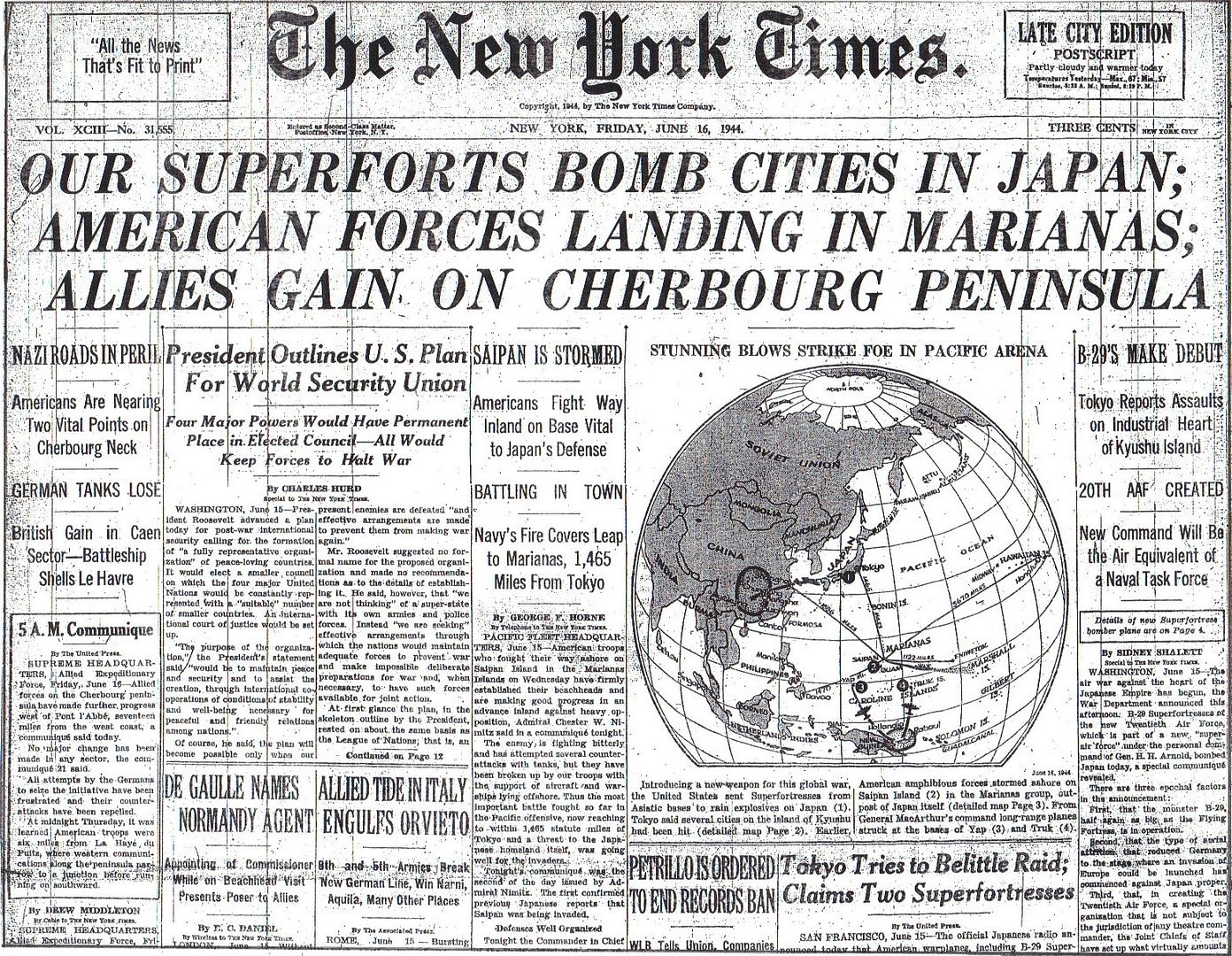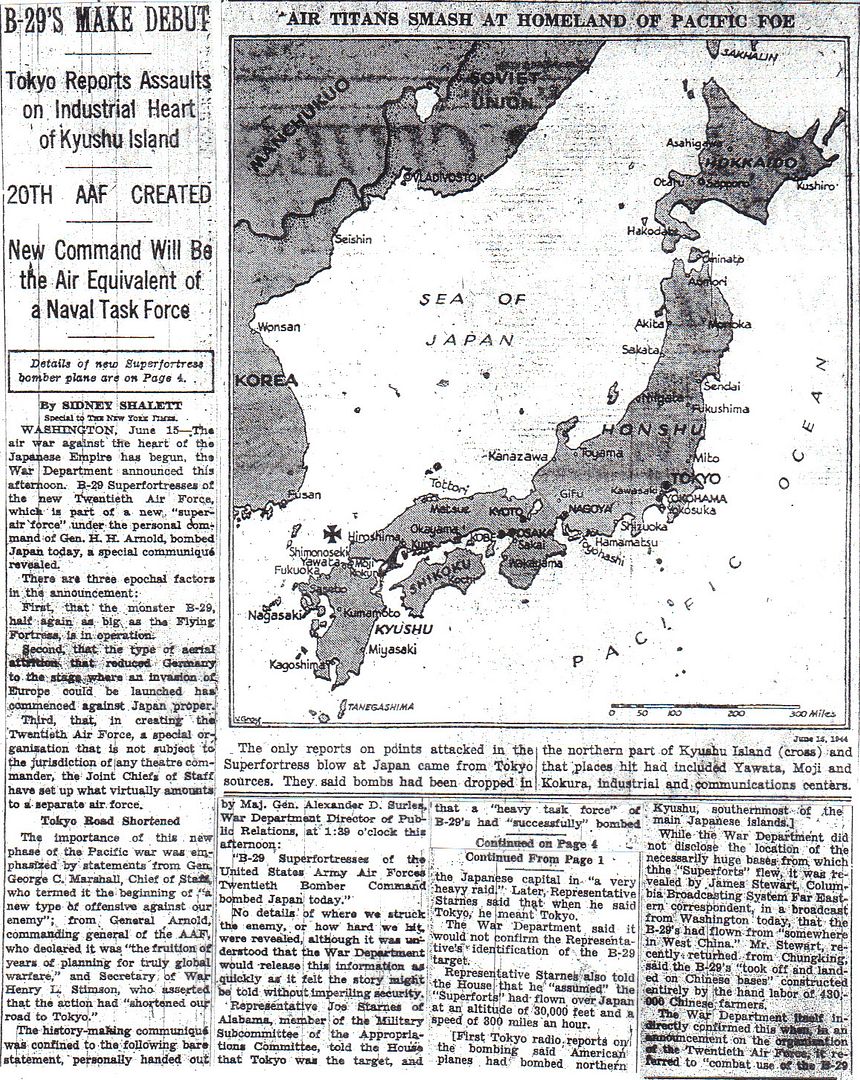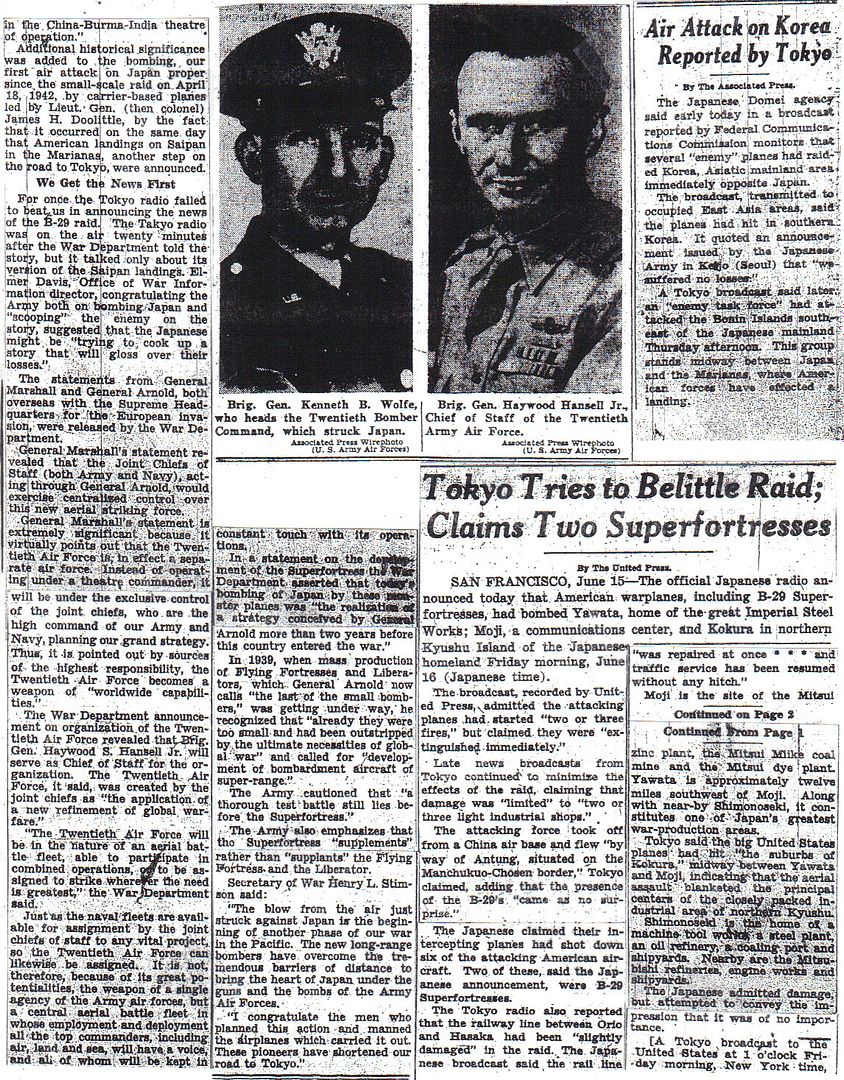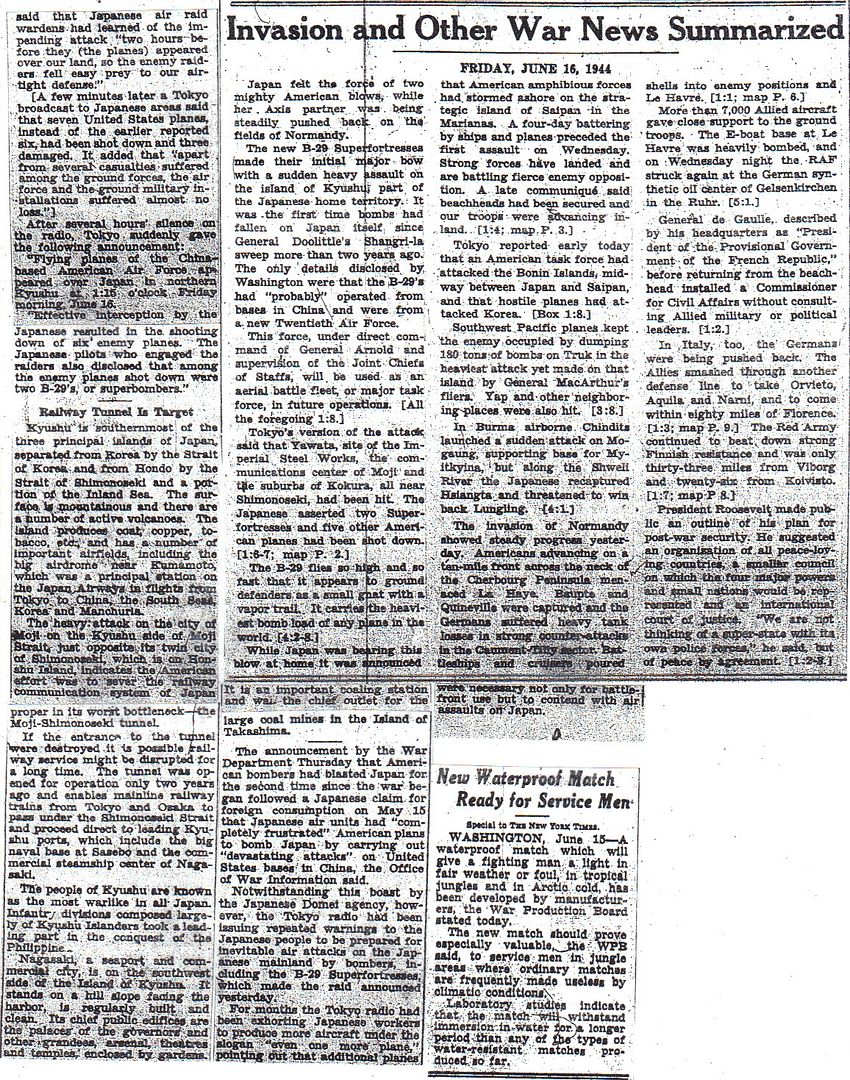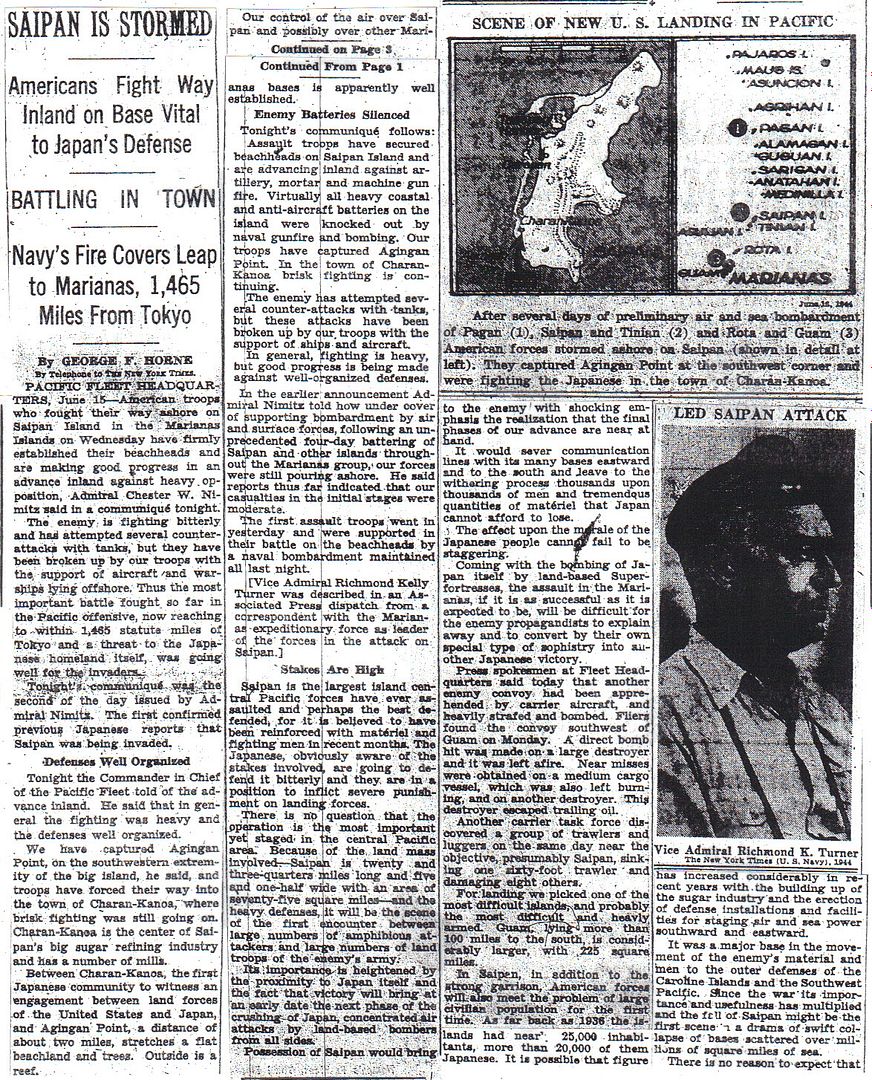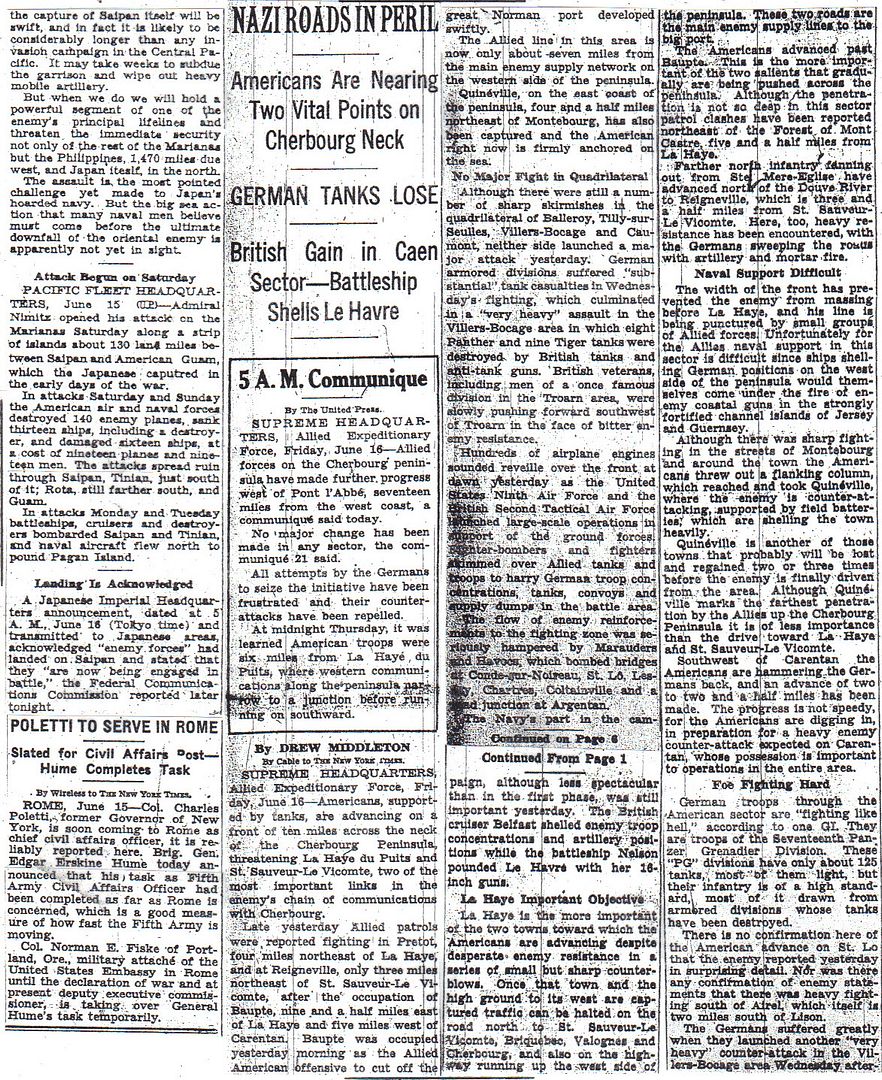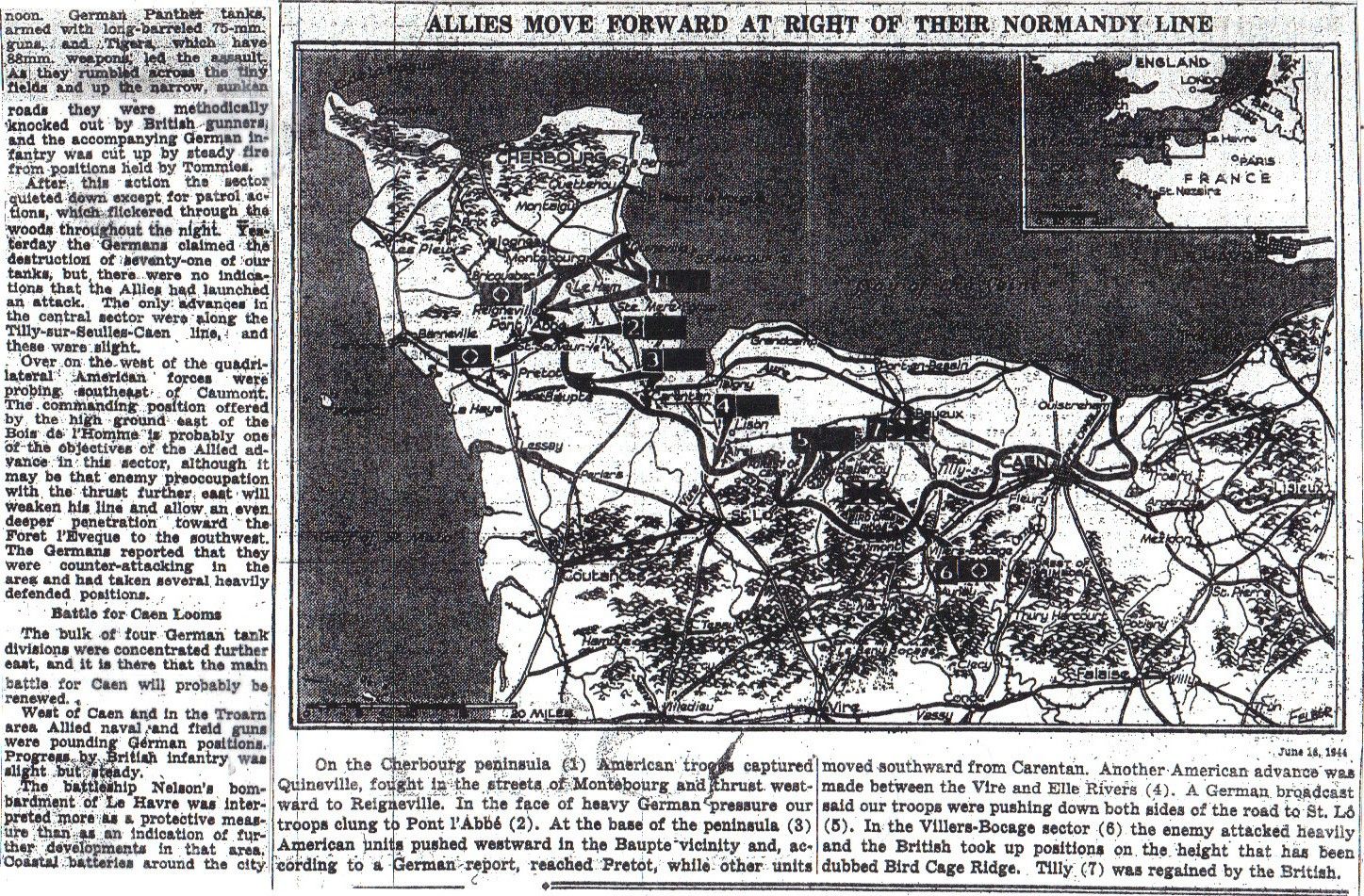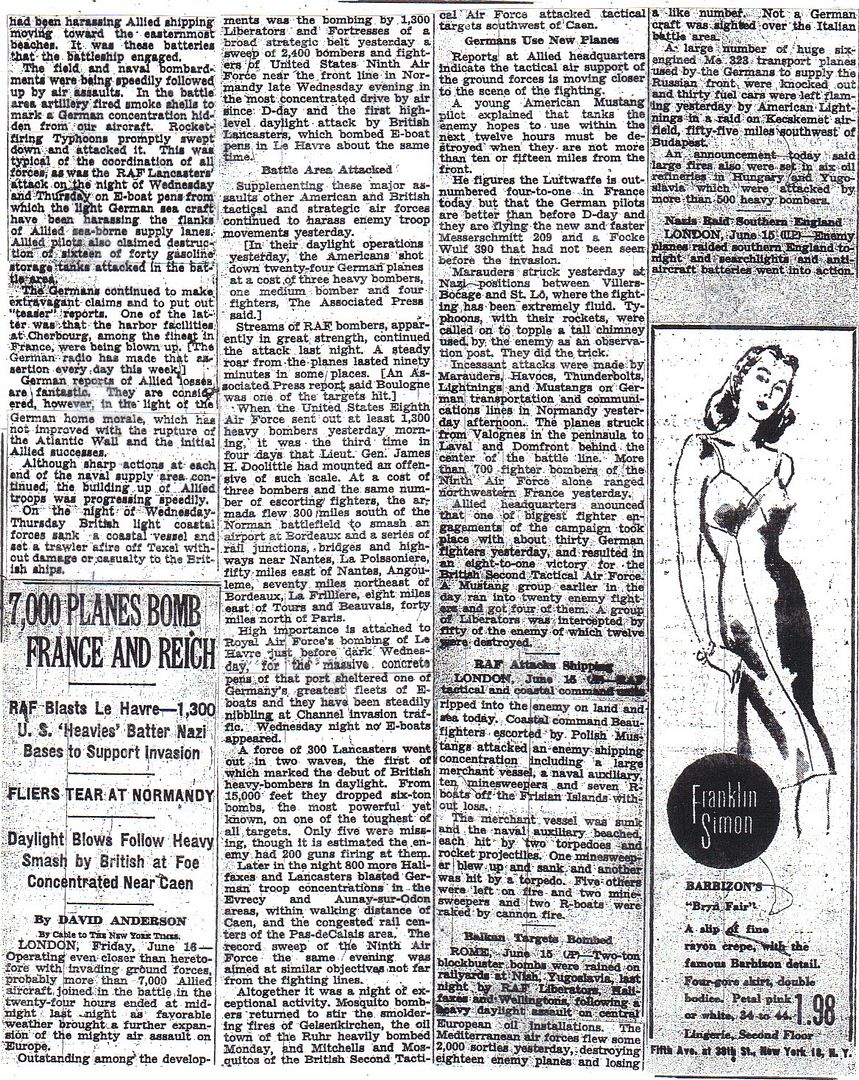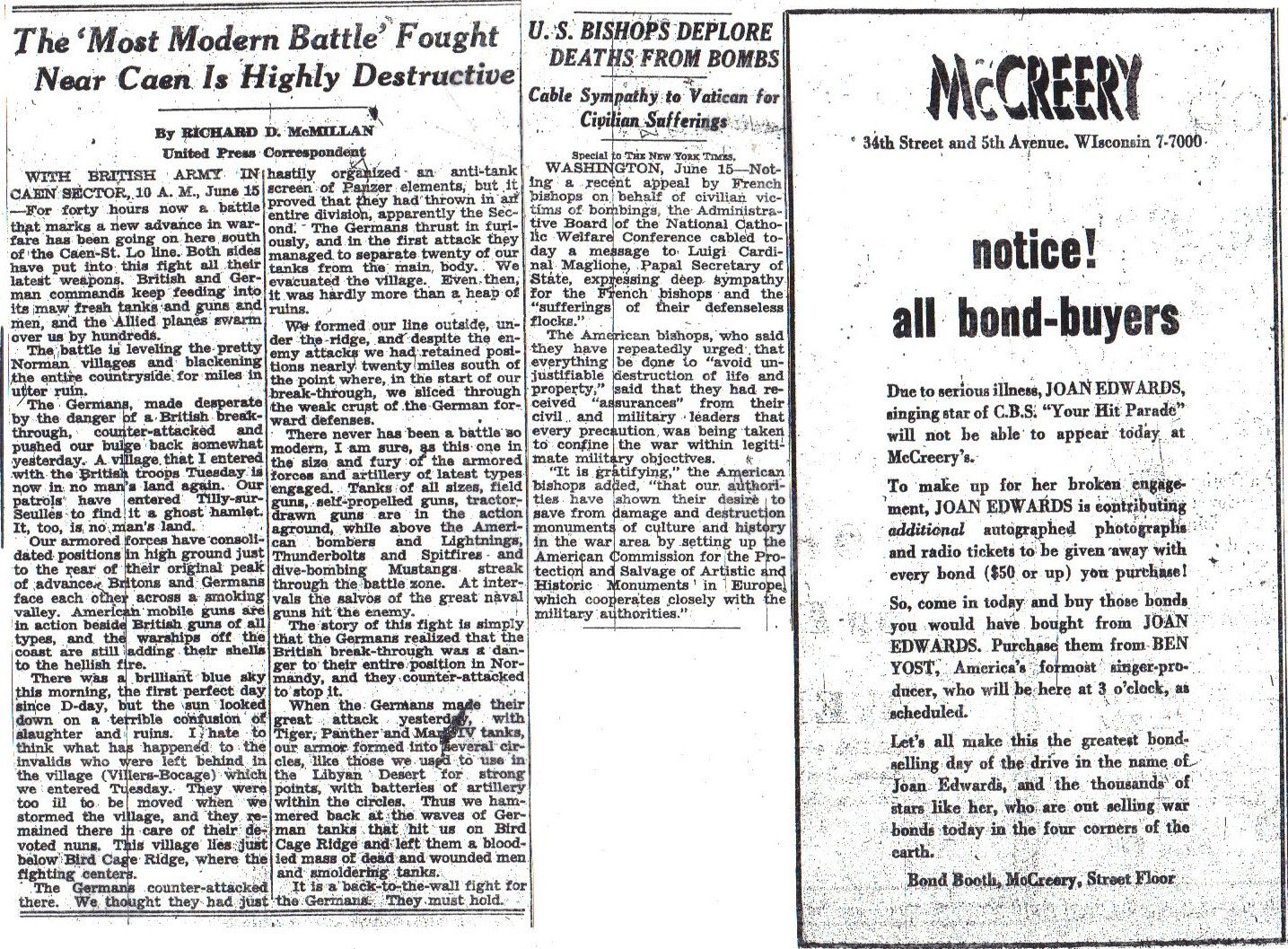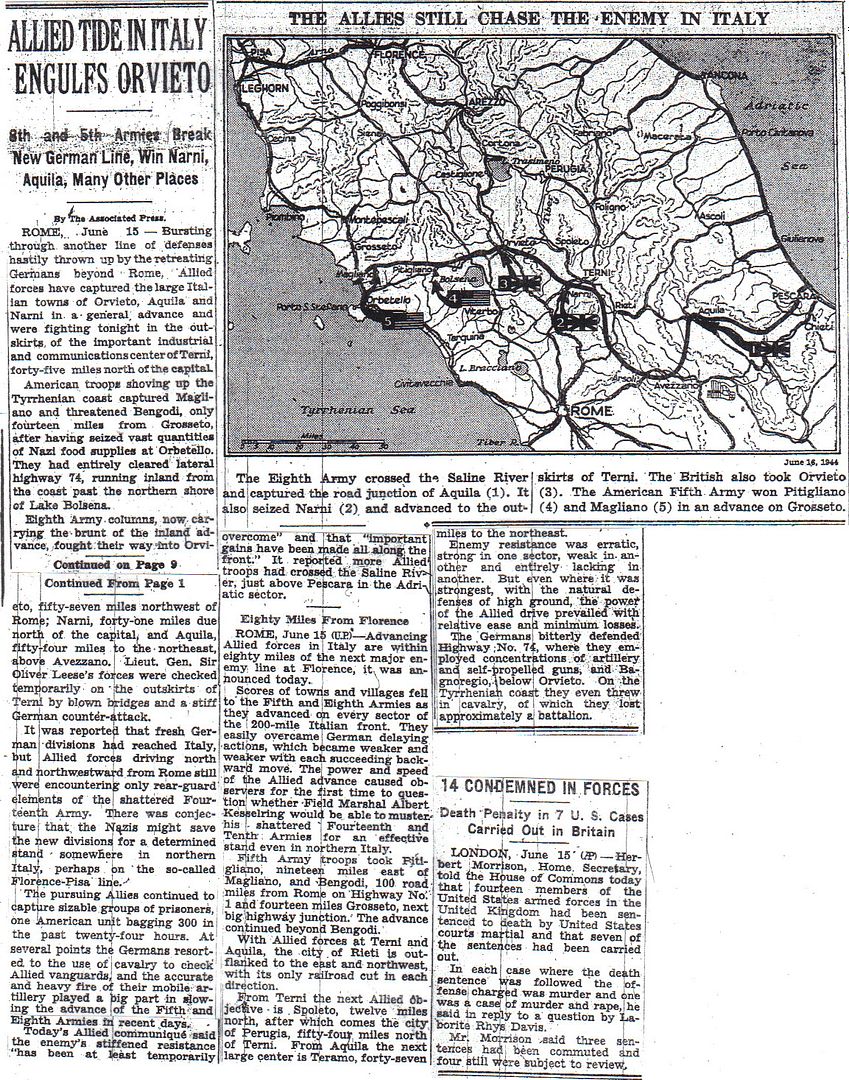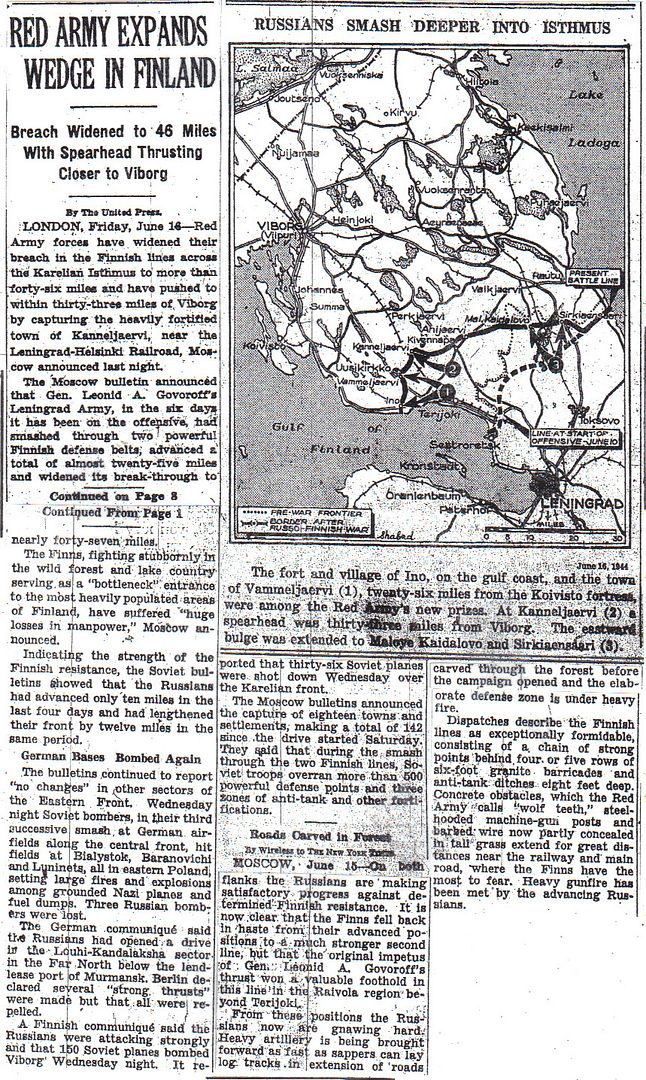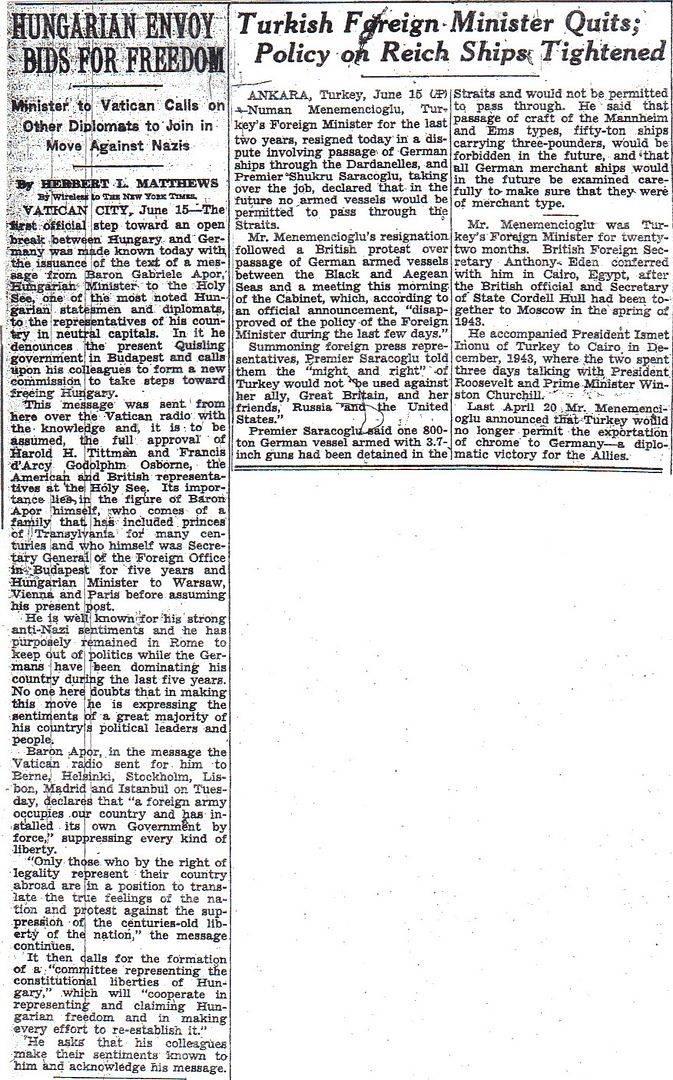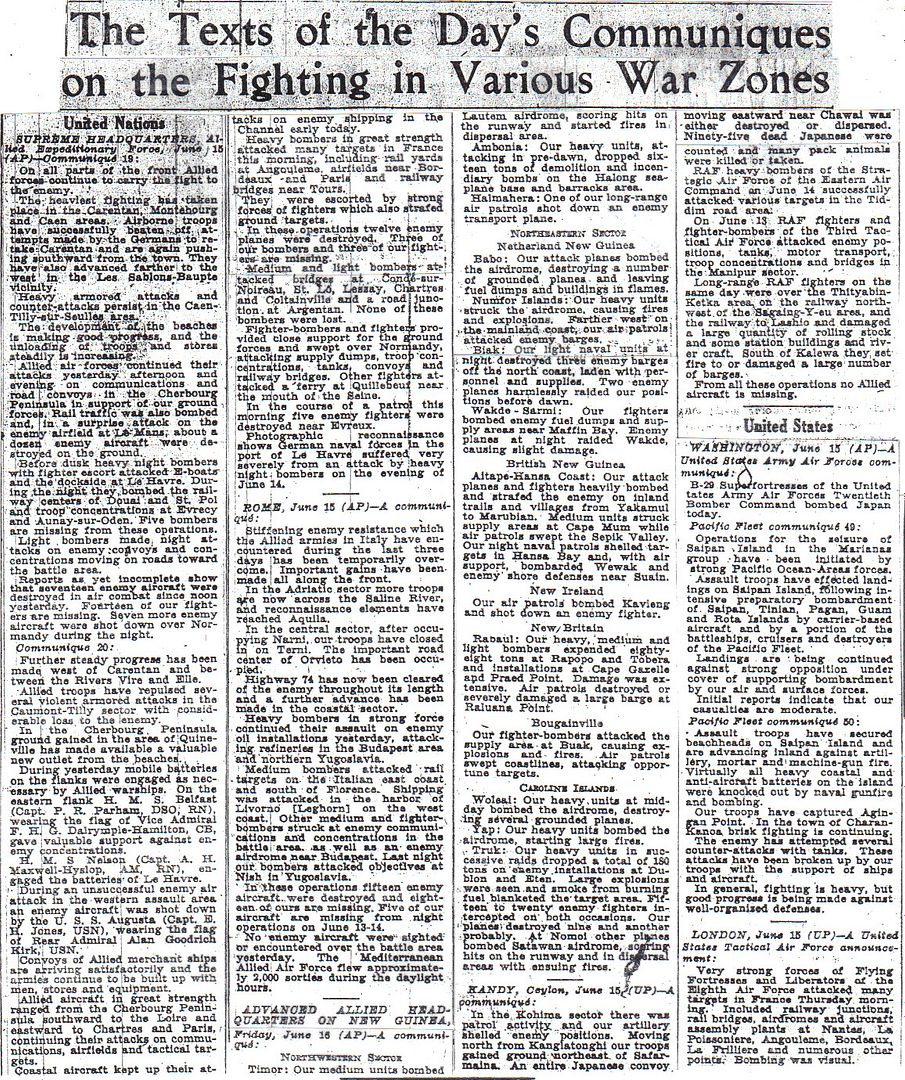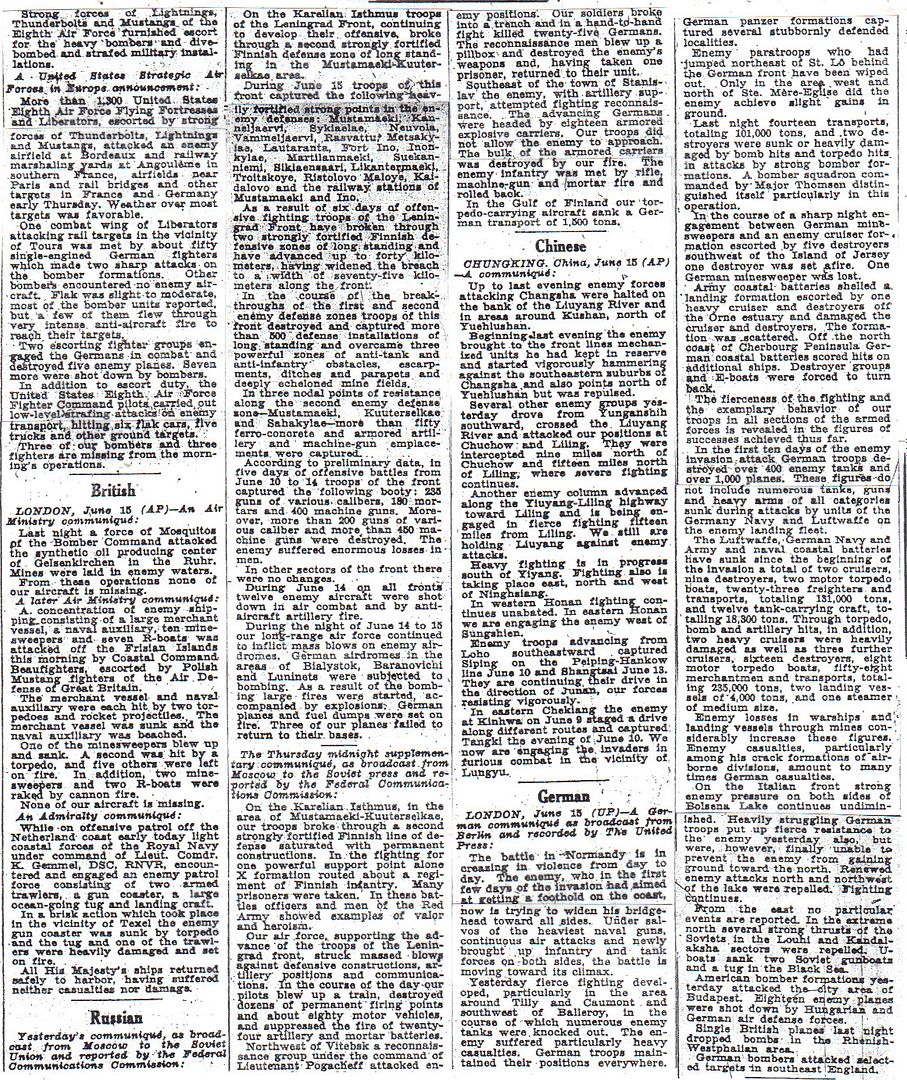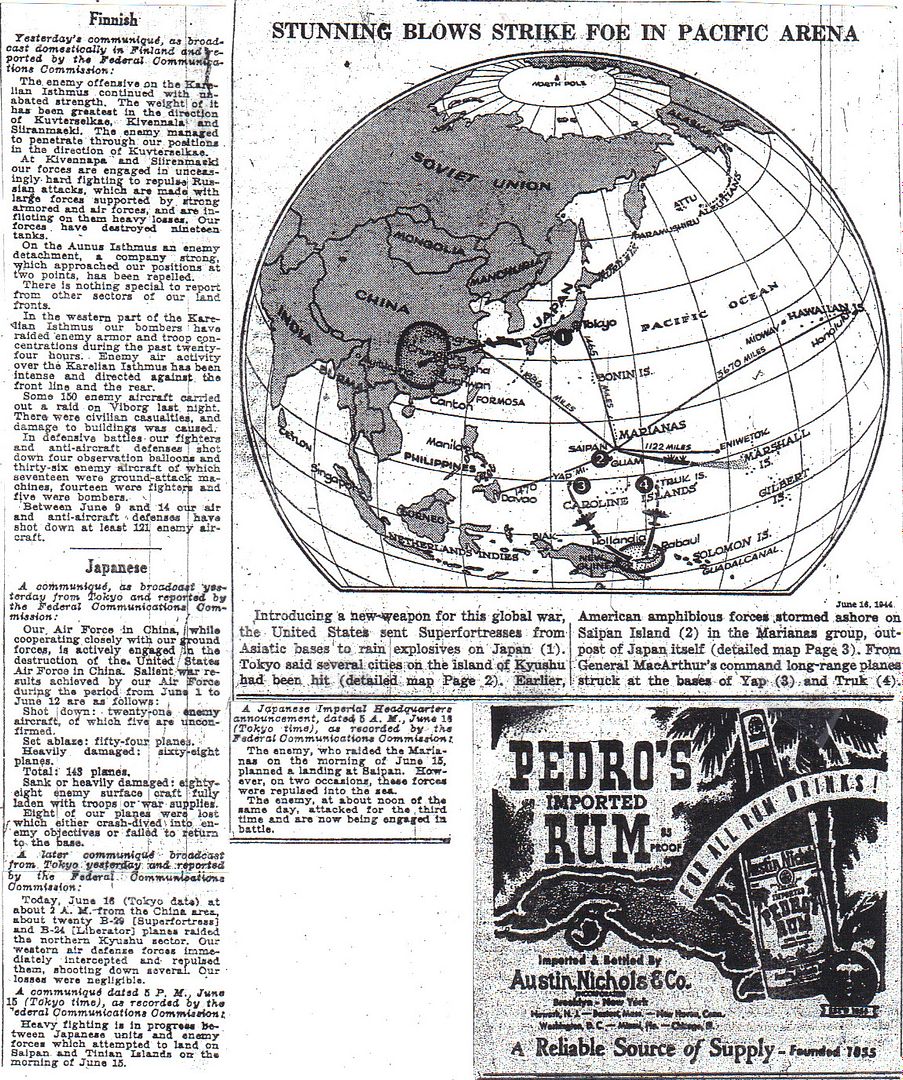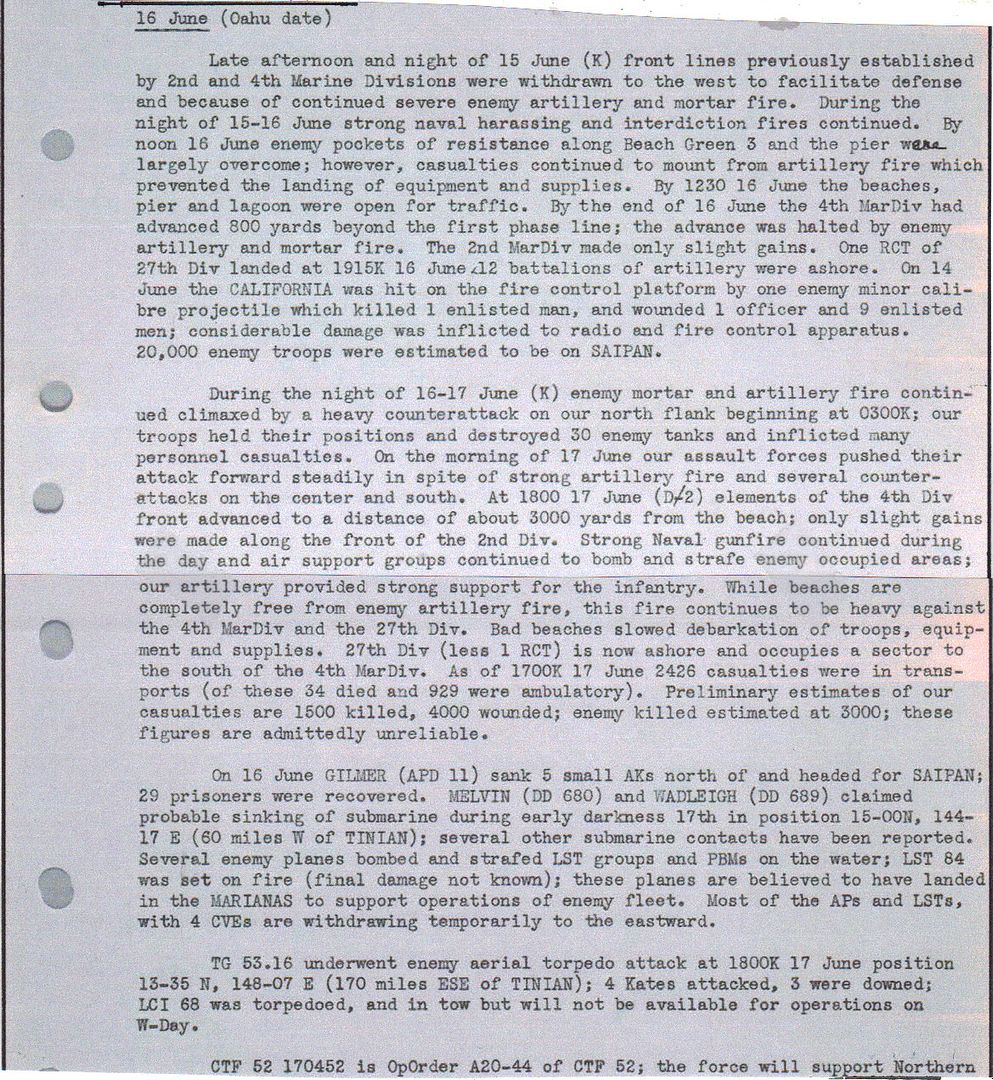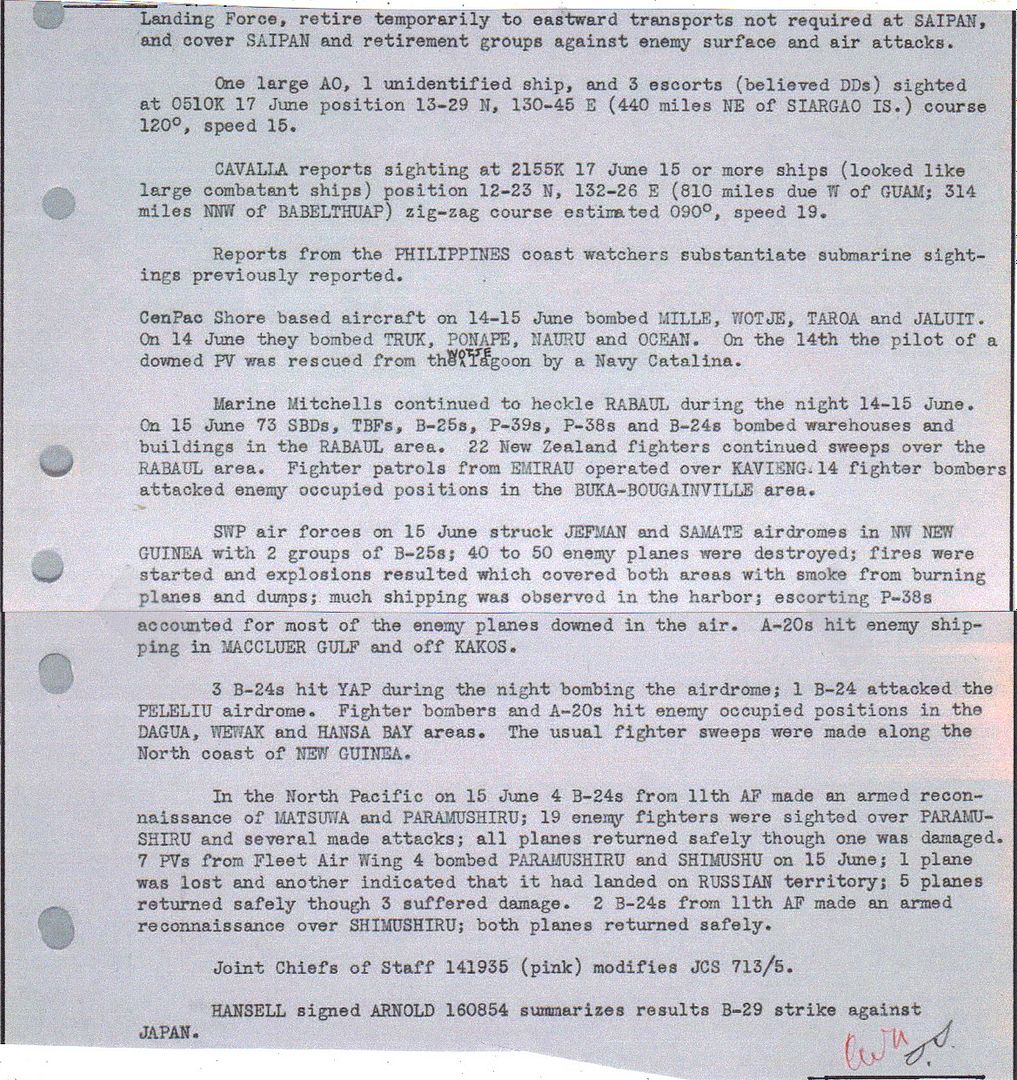http://www.etherit.co.uk/month/thismonth/16.htm
June 16th, 1944 (FRIDAY)
UNITED KINGDOM: The USAAF’s Eighth Air Force in England flies two missions.
Mission 416: 370 bombers, including 22 Pathfinders are dispatched to four airfields and four CROSSBOW (V-weapon) supply sites in France; one B-17 is lost:
1. Of 146 B-17 Flying Fortresses, 38 bomb Laon/Athies Airfield, 38 hit Juvincourt Airfield, 18 hit railroad targets of opportunity and 17 hit Laon/Couvron Airfield; one B-17 is lost.
Personal Memory: Our first (and only) abort.
This was to be our 16th mission and our target was to be the airdrome at Juvincourt, France where the Aredo Jet was being tested. We were looking forward to another Milk Run to add to our growing collection. We were to form up over Molesworth at 25,000 feet in order to avoid traffic from other fields. This was to be our bombing altitude also, but as we climbed over the field in our “Buzz Blonde” we found that we could only get to 23,000 feet due to a lack of manifold pressure on engine number 3. We could only get 20 inches while the norm was 29 inches. We made several attempts to repair the engine by changing the amplifiers. We ran the turbo up to number 10 and turned the turbo screw full on. None of this worked and we had to abort and return to the field. There is an investigation every time a plane aborts or gets lost, but the engineering section confirmed that the abort was justified due to a burned out waste gate motor on number 3 engine. Also found was a sheared bolt on number 4 mixture control. This alone might have caused us to abort had we been unable to lean out the fuel at altitude thereby using extra fuel. The ground crew got busy making repairs for the next mission. What I had assumed would be a milk run today resulted in flak damage to fourteen of our planes and one wounded crewman.They had to make an emergency landing at Northampstead to quickly get aid. You never know what might be in store! Later when we finally went to this same target it was anything but a milk run! Score: Milk Runs: 11, Others 4, Providence (?) 1 (Dick Johnson)
2. 224 B-24 Liberators are dispatched to bomb airfields and CROSSBOW sites; B-24s attacking V-weapon supply sites are: 48 hit Renescure, 44 hit Sautrecourt, 43 hit Domleger and 21 hit Beauvoir; airfields attacked are: 17 hit Beauvais/Tille, 17 hit Authe and 12 hit St Andre de L’Eure.
VIII Fighter Command missions for the day are:
1. 165 P-38s, 88 P-47 Thunderbolts and 172 P-51 Mustangs escort the bombers above, they claim 1-0-0 Luftwaffe aircraft; no losses.
2. 70 P-51s perform a sweep against stalled trains between Angouleme and Poitiers, dropping external fuel tanks on them and firing the tanks by strafing; the same tactics are used on trains in the marshalling yard at Saint-Pierre-d’Ecideuil; heavy damage is inflicted on both targets, including heavy troop casualties.
3. 50 P-38s and 75 P-47s make fighter-bomber attacks on troops in the Arras-St Pol area; at St-Pol-sur-Ternoise a large number of railroad cars are burned by oil and phosphorus bombs and strafing attacks; other marshalling yards, a power station, railroad station, trains, barges, tanks, trucks, gun emplacements, AA tower and an armored vehicle are attacked; A total of about 400 railroad cars are attacked and about half of them set on fire. In general the fighter attacks are highly effective; three P-38s are lost.
Mission 417: Ten B-17s drop leaflets in France during the evening.
FRANCE: US forces cross the River Douvre in Normandy.
King George VI of Great Britain visits troops in Normandy.
In order to secure favourable defensive positions the 101st conducted a few small actions. This continued on June 17. They were the last real combat for the division in Normandy. For the next two weeks until relieved by the 83rd Infantry Division the 101st held strong defensive positions to the south and southwest of Carentan. See Rendezvous with Destiny by Rapport and Northwood, pages 221-224, 247 (Jay Stone)
Bad weather prevents bomber operations by the USAAF’s Ninth Air Force based in England; 500+ fighters strafe and bomb rail lines, bridges and highway traffic on the Cherbourg Peninsula.
GERMANY: U-2324 launched.
ITALY, Umbria: The British X Corps liberate Spoleto, Italy.
The USAAF’s Fifteenth Air Force in Italy dispatches almost 600 bombers to attack targets in Austria and Czechoslovakia; B-17s attack the Kragan and Florisdorf oil refineries around Vienna; B-24s bomb the industrial area at Bratislava, Czechoslovakia and the Lobau and Schwechat oil refineries and Winterhafen oil depot in the Vienna area. Between 200 and 250 fighters attack the formations and 15 USAAF aircraft are shot down; the bombers and escorting fighters claim 70 aircraft destroyed.
FINLAND: Commander of the Isthmus Troops Lt. Gen. Karl Oesch gives orders for the III and IV Corps to withdraw to the third Finnish line of defence (VKT-line) while delaying the enemy.
Marshal Mannerheim orders the Olonets Group (Lt. Gen. Paavo Talvela) on the Olonets Isthmus (between lakes Ladoga and Onega) and the II Corps (Maj. Gen. Einar Mäkinen) on the Maaselkä Isthmus (between Lake Onega and White Sea) to start withdrawing back towards the 1939 border. The situation on the Karelian Isthmus is critical, and the troops are needed there.
Gen. Talvela’s Olonets Group is relatively strong, although it has already lost units to reinforce the defenders in Karelia. It consists of Maj. Gen. Antero Svensson’s V Corps (Maj. Gen. Kaarlo Heiskanen’s 11th Division and Maj. Gen. Selim Isaksson’s 7th Division) and Maj. Gen. Aarne Blick’s VI Corps (Maj. Gen. Kustaa Tapola’s 5th Division, Maj. Gen. Antti Kääriäinen’s 8th Division and the 15th Brigade). Gen. Talvela has already lost his reserves (the 17th Division and 20th Brigade) to the Karelian Isthmus, and now the V Corps HQ and 11th Division are also transferred there. The Onega Group will start its withdrawal tomorrow at 10 pm.
German supplies start again flowing to Finland. To strengthen the Finnish AT-defences, more than 10,000 Panzerfausts are transported by motor torpedo boats and aircraft. Luftwaffe units and Sturmgeschütz-Brigade 303 together with the 122th Infantry Division are on their way. Naturally the German help is conditional - on 12 June Hitler had decided that “as long as the Finns fight, help will be given, but as soon as they start negotiating [peace with the Soviet Union], all supplies will be terminated”.
Six Finnish VMV Patrol boats surprise four enemy G-5 type motor torpedo boats at Halli. One of them is sunk and another captured.
PACIFIC OCEAN: US Fifth Fleet battleships under the command of Admiral Ainsworth shell Guam.
Marines advance on Saipan taking Chaan Karoa and Point Afetna. This links the 2nd and 4th Marine Divisions. The 165th Infantry Regiment and three Field Artillery Battalions of the 27th Infantry Division landed on Saipan. The 165th (the old New York Fighting 69th Regiment of American Civil War fame), was tasked with sweeping the southern shore of Saipan and taking Aslito Airfield.
Carrier-based aircraft from the USN’s Task Groups 58.1 and 58.4 again mount attacks on Iwo Jima, in the Volcano Islands, and Chichi Jima and Haha Jima, in the Bonin Islands, during the afternoon. Targets include airfields, fuel supplies and barracks. Two F6F Hellcats and their pilots are lost. After the attacks, both task groups retire to the Mariana Islands.
In response to the sighting of the IJN’s First Mobile Fleet sailing from the Philippines towards the Mariana Islands by a U.S. submarine, Admiral Raymond A. Spruance, commander Fifth Fleet, orders that the antiaircraft screens around USN carriers be augmented by drawing additional cruisers and destroyers from fire-support and shore-bombardment groups. The entire burden of ground-support missions and on-call air-support is shifted from the fast carriers of Task Force 58 to the escort aircraft carriers of the Fifth Fleet.
Carrier-based aircraft of Task Groups 58.2 and 58.3 attempt to neutralize all of the airfields on Guam and Tinian. The airmen maintain that big guns should also be used against these targets but their suggestions are ignored.
A TBM Avenger from an escort aircraft carrier drops heavy weapons to a USMC infantry battalion on Saipan but the aircraft is too low and many weapons are damaged or destroyed.
CANADA: Corvette HMCS Asbestos commissioned. (Asbestos is named after a town in Quebec north of Sherbrooke. Asbestos gets its name from one of the largest deposits of asbestos in the world.) (Dave Hornford and Dave Shirlaw)
Tel(SO) Donald Warner Oberson RCNVR awarded Mention in Dispatches.
U.S.A.:
CINCPAC COMMUNIQUÉ NO. 51, Chichi Jima, and Haha Jima in the Bonin Islands and Iwo Jima in the Volcano Islands were attacked by carrier aircraft on June 14 (West Longitude Date). Thirty-three enemy fighters which attempted to intercept our forces at Chichi Jima were shot down. Four multi-engined seaplanes were damaged at Chichi Jima At Iwo Jima two airborne enemy aircraft were probably destroyed and 14 were destroyed on the ground.
One medium cargo ship was sunk by bombing at Chichi Jima, and four small cargo ships and six small craft were damaged. A medium transport, discovered underway near the Bonins, was heavily damaged by aircraft and later sunk by one of our destroyers. One hundred and twelve survivors were rescued and made prisoners of war.
Ground installations, including barracks, airfields, and fuel tanks were bombed by our aircraft.
Our losses were four aircraft and five flight personnel.
CINCPAC COMMUNIQUÉ NO. 52, United States assault troops are engaged in bitter fighting against defend-ing forces on Saipan Island. On June 14 (West Longitude Date) and during the night of June 14-15 our troops were withdrawn a short distance toward the beach in some sectors in the face of intense mortar and artillery fire. Positions were consolidated and during the night our Naval forces carried out a heavy bombardment of enemy strong points.
On the morning of June 15 enemy resistance in the strongly held sector north of Charan Kanoa was broken. At midday a major element of our forces commenced an attack which advanced our line nearly one half mile in the southern sector of the island. Lesser advances were made in other sectors.
Our assumption that Saipan Island would be strongly held because of its strategic location in the Japanese defensive system has been proven correct. Preliminary estimates indicate there are upwards of two divisions of enemy troops defending Saipan. (Denis Peck)
Destroyer USS Hyman commissioned.
Minesweeper USS Pirate commissioned.
Coast Guard-manned Army vessel FS-256 was commissioned at New York with LT C. E. Thorsen, USCGR as her first commanding officer. On 17 July 1944 she departed New York for the Southwest Pacific. She was assigned to and operated in the Southwest Pacific area. LTJG K. F. Erickson, USCGR succeeded Thorsen on 3 October 1945. The ship was decommissioned 14 October 1945.
ATLANTIC OCEAN: The unescorted Columbine was torpedoed and sunk by U-198 25 miles NW of Cape Castle, South West Africa. The master, 19 crewmembers and six passengers were lost.
U-804 attacked by a Norwegian 333 Sqn Mosquito. 8 men were wounded but the boat was not seriously damaged. 2 of the air crew were saved by U-1000 on 18 June and taken to Norway for questioning.


